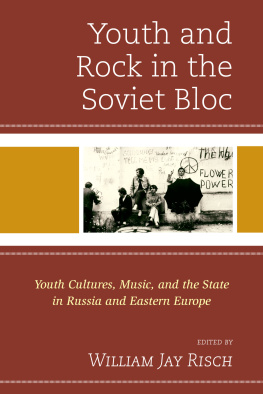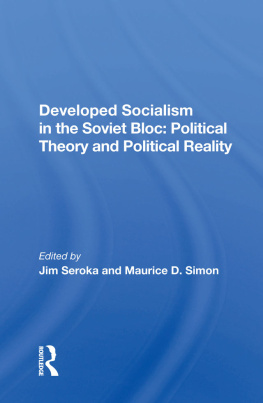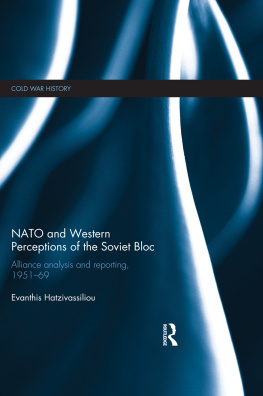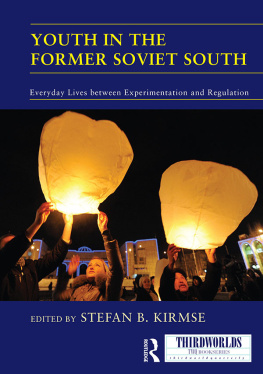Risch William Jay - Youth and Rock in the Soviet Bloc
Here you can read online Risch William Jay - Youth and Rock in the Soviet Bloc full text of the book (entire story) in english for free. Download pdf and epub, get meaning, cover and reviews about this ebook. year: 2012, publisher: Lexington Books, genre: Politics. Description of the work, (preface) as well as reviews are available. Best literature library LitArk.com created for fans of good reading and offers a wide selection of genres:
Romance novel
Science fiction
Adventure
Detective
Science
History
Home and family
Prose
Art
Politics
Computer
Non-fiction
Religion
Business
Children
Humor
Choose a favorite category and find really read worthwhile books. Enjoy immersion in the world of imagination, feel the emotions of the characters or learn something new for yourself, make an fascinating discovery.
- Book:Youth and Rock in the Soviet Bloc
- Author:
- Publisher:Lexington Books
- Genre:
- Year:2012
- Rating:5 / 5
- Favourites:Add to favourites
- Your mark:
- 100
- 1
- 2
- 3
- 4
- 5
Youth and Rock in the Soviet Bloc: summary, description and annotation
We offer to read an annotation, description, summary or preface (depends on what the author of the book "Youth and Rock in the Soviet Bloc" wrote himself). If you haven't found the necessary information about the book — write in the comments, we will try to find it.
Youth and Rock in the Soviet Bloc — read online for free the complete book (whole text) full work
Below is the text of the book, divided by pages. System saving the place of the last page read, allows you to conveniently read the book "Youth and Rock in the Soviet Bloc" online for free, without having to search again every time where you left off. Put a bookmark, and you can go to the page where you finished reading at any time.
Font size:
Interval:
Bookmark:
Youth and Rock in the Soviet Bloc
Youth and Rock in the Soviet Bloc
Youth Cultures, Music, and the State in Russia and Eastern Europe
Edited by William Jay Risch
LEXINGTON BOOKS
Lanham Boulder New York London
Published by Lexington Books
An imprint of The Rowman & Littlefield Publishing Group, Inc.
4501 Forbes Boulevard, Suite 200, Lanham, Maryland 20706
www.rowman.com
Unit A, Whitacre Mews, 26-34 Stannary Street, London SE11 4AB
Copyright 2015 by Lexington Books
All rights reserved. No part of this book may be reproduced in any form or by any electronic or mechanical means, including information storage and retrieval systems, without written permission from the publisher, except by a reviewer who may quote passages in a review.
British Library Cataloguing in Publication Information Available
Library of Congress Cataloging-in-Publication Data
Youth and rock in the Soviet bloc : youth cultures, music, and the state in Russia and Eastern Europe / edited by William Jay Risch.
pages cm
Includes bibliographical references and index.
ISBN 978-0-7391-6693-2 (cloth : alk. paper) -- ISBN 978-0-7391-7823-2 (electronic)
1. Popular music--Political aspects--Europe, Eastern--History--20th century. 2. Popular music--Social aspects--Europe, Eastern--History--20th century. 3. Popular music--Political aspects--Soviet Union. 4. Popular music--Social aspects--Soviet Union. 5. Music and state--Europe, Eastern--History--20th century. 6. Music and state--Soviet Union. 7. Youth--Europe, Eastern--History--20th century. 8. Youth--Soviet Union. 9. Cold War--Music and the war. I. Risch, William Jay.
ML3917.E852Y68 2014
306.4'84260947--dc23
2014038910
 TM The paper used in this publication meets the minimum requirements of American National Standard for Information Sciences Permanence of Paper for Printed Library Materials, ANSI/NISO Z39.48-1992.
TM The paper used in this publication meets the minimum requirements of American National Standard for Information Sciences Permanence of Paper for Printed Library Materials, ANSI/NISO Z39.48-1992.
Printed in the United States of America
For our parents.
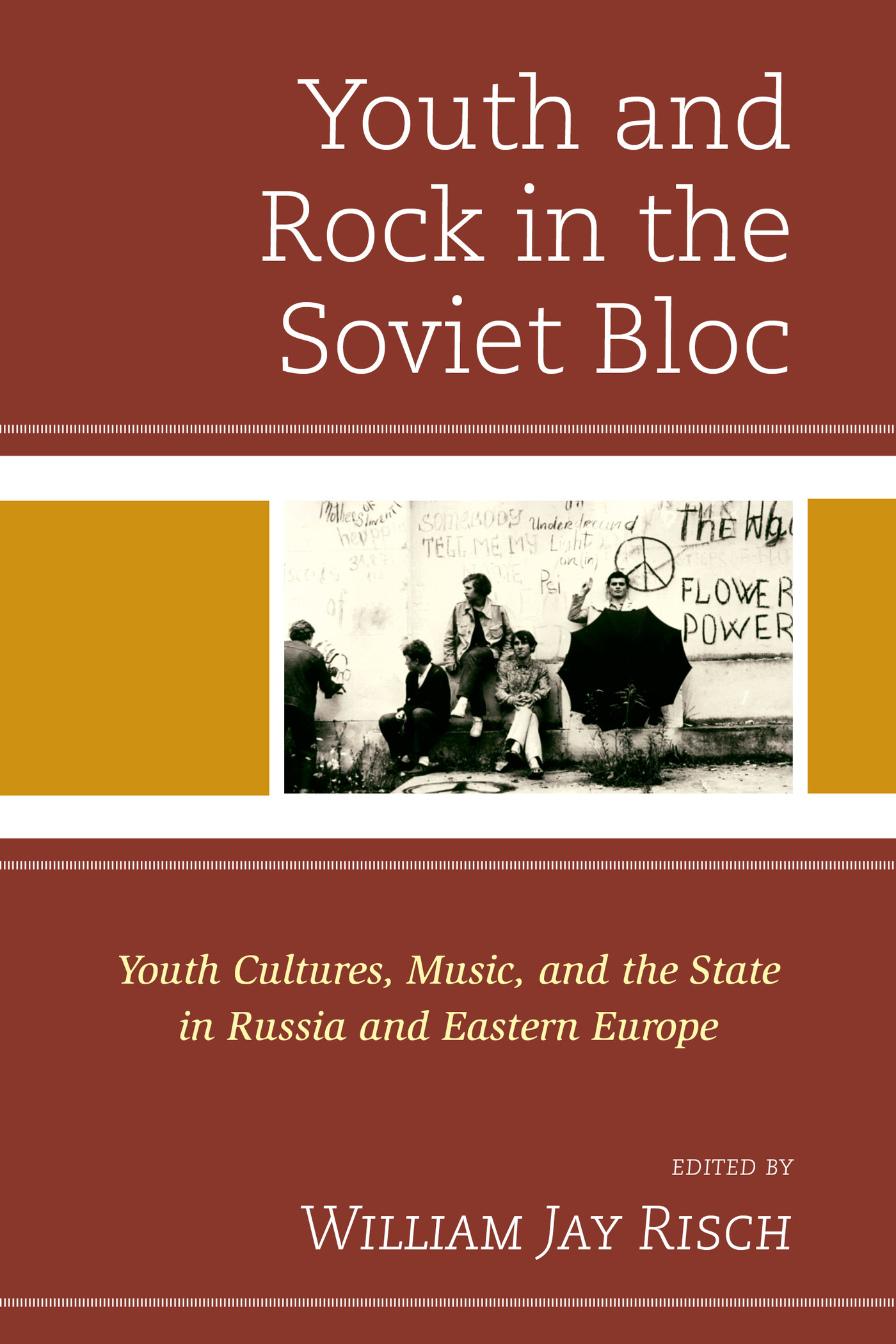
William Jay Risch
After 1945, the youth came to represent the hopes and anxieties of a world recovering from a devastating war. World War II had led to the deaths of around thirty-six million Europeans.
Young people soon became of crucial importance to the Cold War that emerged between the superpowers of the United States and the Soviet Union. World War II had reinvigorated Soviet myths about the October Revolution. Defeating Nazism had given the Soviet project a new sense of purpose, as it demonstrated socialisms ability to counter the most aggressive forces of capitalism and imperialism. The youth were to be at the center of a new revolutionary struggle where building Communism had taken on a renewed global mission.
As youth developed into a social category of consumers, they became a source of great anxiety across the world. A 1960 United Nations report suggested the global scope of these concerns. A product of the Second United Nations Congress on the Prevention of Crime and the Treatment of Offenders, held in London, August 8 to 20, 1960, the report, New Forms of Juvenile Delinquency: Their Origin, Prevention and Treatment, described youth cultures throughout the world that posed a menace to society. It attributed rising standards of living and improvement in state welfare systems to new forms of juvenile delinquency such as car thefts by the young. The report suggested that new forms of juvenile delinquency that had emerged since World War II had led to new forms of expression by young people that could not be reduced to poverty, the impact of war, or needs for emotional fulfillment alone, but something else:
It is difficult to assess to what extent this deterioration [of young peoples morals and behavior] is the result of factors such as growing materialism, contradictory systems of values, one idealistic and the other for practical everyday use; a more or less generalized sense of distrust or insecurity in spite of greater material security; the reported increase of corruption in levels entrusted with functions of guidance, protection or security. It is interesting, in any case, that in quite a number of countries, juveniles, especially young adults, seem to assume in a variety of ways, even in clothing, an attitude of sometimes clearly rebellious distrust or protest against certain prevailing mores, principles and slogans. Usually, especially in highly developed countries, these young people enjoy material advantages, including good working conditions and opportunities of earning and spending money, which were never before available to this age group. No doubt such protests and rebellions among young people are not new. What is new is the way in which this attitude is at present affecting more young people than ever before.
Thus juvenile delinquency, for these United Nations experts, had become a different problem for places like postwar Europe and the United States. In Western Europe, the rise of the welfare state, postwar reconstruction, and greater economic ties with the United States during the Cold War by the beginning of the 1960s had fueled improved material conditions that made it possible for young people to engage in a culture of consumption and leisure not seen before. In the United States, which had not seen the level of carnage Europe had during World War II, these rising standards of living had affected young people a decade earlier, leading to the teenager as an important consumer and social category already by the mid-1950s. In Eastern Europe, centrally planned economies took more time to produce the amount of consumer goods in the West, but even here, by the 1960s, greater opportunities for leisure, and some of the basic guarantees of the welfare state, had arrived. Thus the 1960 United Nations report made clear that there was an essential difference in the new forms of juvenile delinquency emerging among more urban, industrialized societies like those in Europe and the United States: [I]n some highly developed countries juvenile delinquency is becoming more and more a problem of attitudes, while in the less developed countries, especially of Africa, Asia and Latin America, it can still be clearly linked with factors such as poverty, lack of education, poor health and urbanization.
The United Nations report listed numerous youth cultures linked to these problems with peoples attitudes. Groups and gangs on street corners, involving juveniles and adolescents committing mass rioting or other patterns of antisocial behavior, had emerged in a number of different parts of the world. They were called the Halbstarke or half-matured (West and East Germany), the Teddy Boys (Great Britain), the Blousons noirs (France), the vitelloni (Italy), hooligans (Poland and the Soviet Union), Tsotsio (South Africa), Bodgies (for boys) and Widgies (for girls) (Australia and New Zealand), and Mambo boys and girls (Japan).
Remarks like these by the United Nations illustrated how the values and behaviors of young people had greatly disappointed older generations a decade and a half after the end of World War II. Greater prosperity, or at least greater normalcy, had given the young an opportunity to make a better world, yet they were not living up to those standards. In France, by the end of the 1950s, a younger generation more oriented toward consumption and leisure threatened the values of political and cultural elites, despite the fact that their government had taken greater steps to look after the material and cultural needs of young people.
Next pageFont size:
Interval:
Bookmark:
Similar books «Youth and Rock in the Soviet Bloc»
Look at similar books to Youth and Rock in the Soviet Bloc. We have selected literature similar in name and meaning in the hope of providing readers with more options to find new, interesting, not yet read works.
Discussion, reviews of the book Youth and Rock in the Soviet Bloc and just readers' own opinions. Leave your comments, write what you think about the work, its meaning or the main characters. Specify what exactly you liked and what you didn't like, and why you think so.

